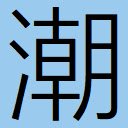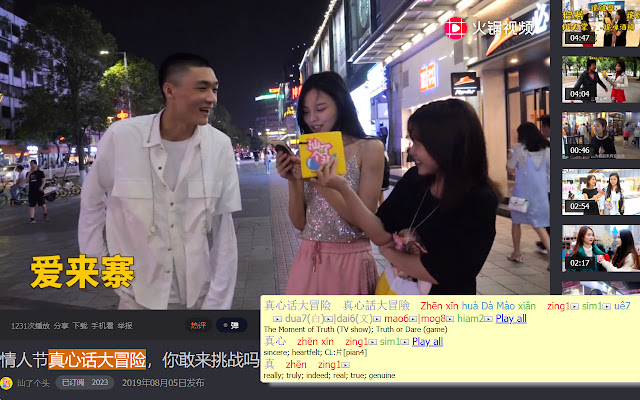Teochew Pop up Dictionary in Chrome with OffiDocs
Ad
DESCRIPTION
SCREENSHOTS [1]汕了个头 is a Teochew variety show web channel based in Shantou, the city considered to be the economic capital of the Teochew region (https://v.
qq.
com/x/page/u0909zkm3ax.
html) [2]The music video for 敏敏's - 阿公, one of the newest Teochew songs to go viral (https://v.
youku.
com/v_show/id_XNDEzNDIzMDE4OA==.
html) [3]李子光, a Teochew Opera performer turned local Internet star, explaining his singing technique over live stream on the Kwai app [4]腸粉, a staple rice noodle snack of the Teochew/Chaoshan region [5]From the Riverwalk, a view of the 礐石 scenic area adorned in moving lights and music, opposite the river on Shantou's south side WHAT IS TEOCHEW? Teochew(https://en.
wikipedia.
org/wiki/Teochew_dialect) belongs to the Southern Min branch of Chinese with over 25 million speakers worldwide.
Outside of China, it is among one of the most spoken Chinese varieties only surpassed by Mandarin, Cantonese, and Taiwanese/Hokkien.
Phonetically, it has not changed very much and many vocabularies from Japanese, Korean, and Vietnamese that originated from China centuries ago still sound similar to Teochew.
For example, consider 肉 which means flesh.
[Niku] is one of the common Japanese readings borrowed from China along with the character.
Compare with Teochew [nek8] (POJ spelling - https://en.
wikipedia.
org/wiki/Pe̍h-ōe-jī) and Mandarin [rou4].
USAGE Teochew Pop-up Dictionary is based on Zhongwen: Chinese-English Dictionary (https://chrome.
google.
com/webstore/detail/zhongwen-chinese-english/kkmlkkjojmombglmlpbpapmhcaljjkde) [v.
5.4.3] by Christian Schiller.
For non-Teochew usage info (like useful keyboard shortcuts), please refer to his page or the in-extension help.
If Teochew functionality isn't needed at all, please directly use Zhongwen for Mandarin learning instead.
Press the [潮] button to enable the extension and bring up the mini-help menu.
Move the mouse outside the help menu to clear it or hit the [Esc] keyboard button.
Mouse over Chinese to bring up the entry in a pop-up.
For most users, you'll get the most mileage looking up a word in English on a translation website and then mousing over the Chinese characters.
-Layout- Each entry shows Simplified Chinese and then Traditional Chinese, if the characters are different, and then the Pinyin and Teochew Romanization with the definition underneath.
The layout, including omitting Pinyin, can be customized on the options page.
In many cases, a single Chinese character will have many Teochew pronunciations and the correct one for a multi-character word cannot be determined by software.
In that scenario, the possible pronunciations are listed together.
In order to help with the clutter that may cause, the Teochew pronunciations that belong to a character will be grouped by color.
For example, in a three Chinese character word, all pronunciations associated with the first character will be red, with the second character green, and with the third blue.
As it turns out, Teochew can differ from one location to the next where the amount of differences correlate strongly with geographical barriers.
The Teochew in this extension is based on the prestige form found in the city center of Shantou and most widely reflects the Teochew spoken worldwide.
-Teochew Romanization: Peng'im- While Pinyin is the most universally accepted Romanization system for Mandarin, the same level of acceptance has not been attained for Teochew, resulting in people making up their own systems and inconsistent spellings.
Such is so even for most native speakers in China.
On the other hand, professional Teochew linguists and Teochew-Chinese dictionaries use the government backed Peng'im (https://en.
wikipedia.
org/wiki/Peng%27im) system, which is the most Pinyin-like compared to other Southern Min Romanization systems.
Given that most users aren't familiar with Peng'im, almost every Teochew syllable also has a playable pronunciation.
-Play All Feature- Like Mandarin, Teochew is tonal but with 8 tones (https://www.
teochewdialect.
net/tone.
php?code=en).
Note the tone line graph in the previous link, where the x-axis is time and the y-axis is pitch.
Tones 4 and 8 have a shorter duration and sudden stops compared to the other tones.
Also note that the tones will change under certain circumstances in a phenomenon known as Tone Sandhi.
Generally speaking, all tones will change when they're not the last character of a noun or an utterance.
The mapping is as follows for the Shantou variant: Original Tone | New Tone ------------------------ 1 | 1 2 | 6 3 | 5 4 | 8 5 | 7 6 | 7 7 | 7 8 | 4 Example: computer = 電[diang6](electricity) + 腦[nao2](brain) = 電腦, effectively (diang7 nao2) To facilitate learning the tone changes, a Play All button when clicked will play the audio for all characters with the tone changes.
When a Chinese character has multiple pronunciations, the first pronunciation or a pronunciation marked with 训 or 俗 will be used.
VOCABULARY DIFFERENCES: Written Chinese and Teochew In the 1920s, the writing system was reformed from Classical Chinese to Standard Written Chinese, based on spoken Mandarin.
Though it is possible to write Chinese mirroring Teochew, this is mostly limited to informal settings like in messaging apps or song lyrics.
Anything more formal than that will be written in standard Chinese.
The important thing to note here is that while grammar is more or less very similar, certain kinds of vocabulary can be different.
This comes up more often with daily discussion vocabulary, like pronouns, food, basic verbs, etc, while more intermediate and advanced subjects or abstract ideas use the same Chinese characters (but of course different pronunciations).
Here are examples: English | Mandarin | Teochew ---------------------------- eyes | 眼睛 (yan3 jing1) | 目 (mag8) eat | 吃 (chi1) | 食 (ziah8) descend | 下 (xia4) | 落 (loh8) Japan | 日本 (ri4 ben3) | 日本 (rig8 bung2) tooth decay | 蛀牙 (zhu4 ya2) | 蛀牙 (zu3 ghê5) insurance | 保險 (bao3 xian3) | 保險 (bo2 hiam2) GOAL OF CHROME EXTENSION Given the differences between written Chinese and Teochew, this software does not intend to teach anybody how to speak Teochew.
There are already websites and mobile apps that will get you started.
Instead, this extension intends to supplement those who already have a Teochew or Chinese background to expand and reinforce their vocabulary when talking with family or if they're studying Mandarin to leverage familiarity from already speaking Teochew.
Confirm the correct Teochew pronunciation by asking a family member.
My hope is that your Teochew and communication with family will both improve! UPDATE [v.
2.1.0] - Performance enhancements [v.
2.0.0] - Extension download size reduced by 60% - "Play all" bug fixed when final character in a word does not have audio [v.
1.1.0] - Pop-up implemented using Shadow DOM to isolate the play buttons from the web page CSS - Dictionary updated with more Standard Chinese words
Additional Information:
- Offered by Paul La
- Average rating : 5 stars (loved it)
- Developer This email address is being protected from spambots. You need JavaScript enabled to view it.
Teochew Pop up Dictionary web extension integrated with the OffiDocs Chromium online
















